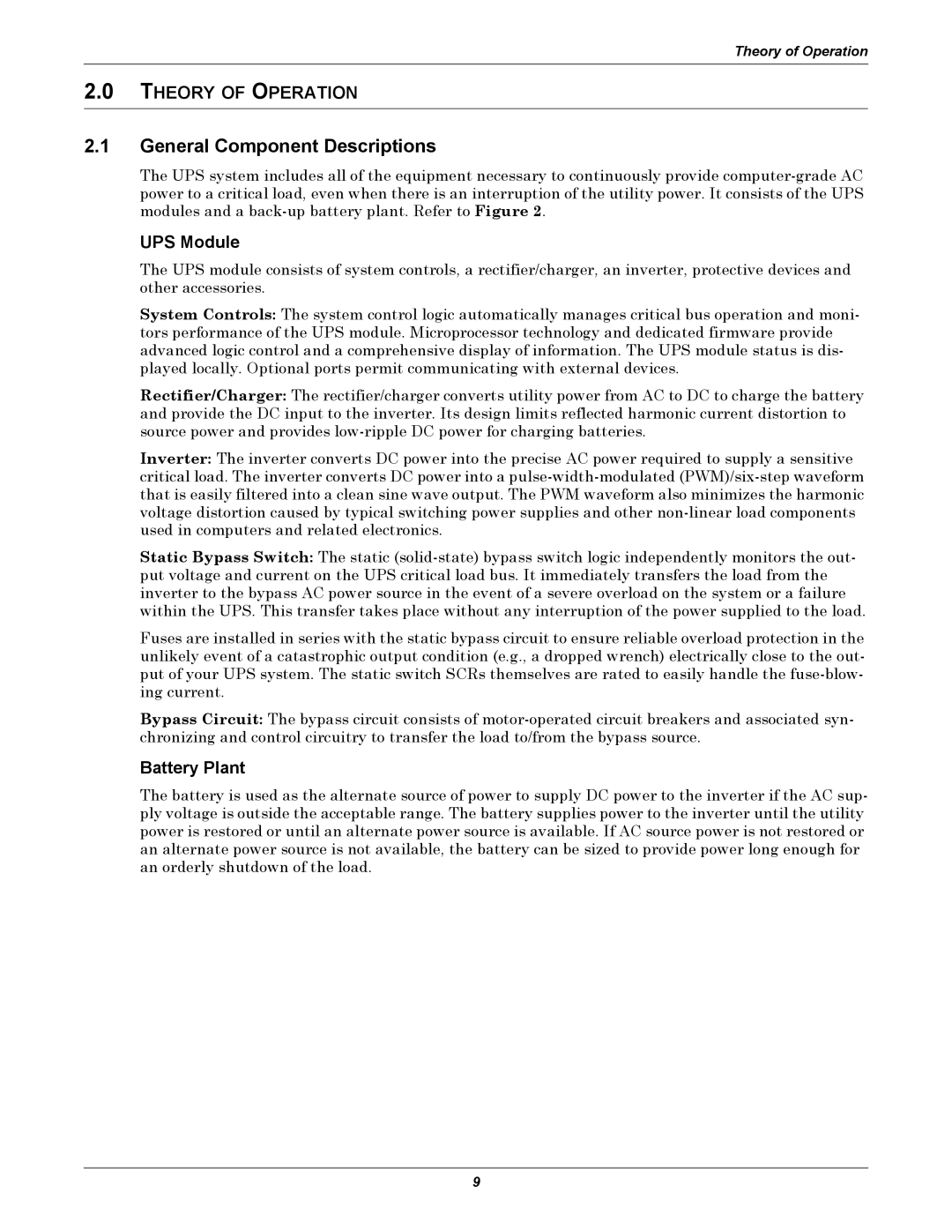
Theory of Operation
2.0THEORY OF OPERATION
2.1General Component Descriptions
The UPS system includes all of the equipment necessary to continuously provide
UPS Module
The UPS module consists of system controls, a rectifier/charger, an inverter, protective devices and other accessories.
System Controls: The system control logic automatically manages critical bus operation and moni- tors performance of the UPS module. Microprocessor technology and dedicated firmware provide advanced logic control and a comprehensive display of information. The UPS module status is dis- played locally. Optional ports permit communicating with external devices.
Rectifier/Charger: The rectifier/charger converts utility power from AC to DC to charge the battery and provide the DC input to the inverter. Its design limits reflected harmonic current distortion to source power and provides
Inverter: The inverter converts DC power into the precise AC power required to supply a sensitive critical load. The inverter converts DC power into a
Static Bypass Switch: The static
Fuses are installed in series with the static bypass circuit to ensure reliable overload protection in the unlikely event of a catastrophic output condition (e.g., a dropped wrench) electrically close to the out- put of your UPS system. The static switch SCRs themselves are rated to easily handle the
Bypass Circuit: The bypass circuit consists of
Battery Plant
The battery is used as the alternate source of power to supply DC power to the inverter if the AC sup- ply voltage is outside the acceptable range. The battery supplies power to the inverter until the utility power is restored or until an alternate power source is available. If AC source power is not restored or an alternate power source is not available, the battery can be sized to provide power long enough for an orderly shutdown of the load.
9
